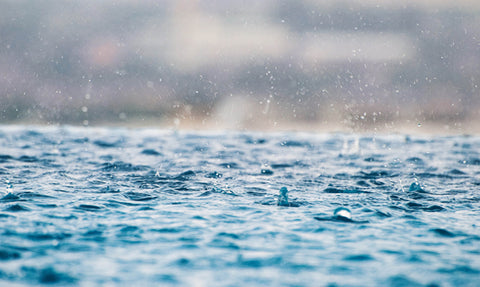
Recent studies suggest that rainwater across the globe, from the outskirts of Antarctica to the Tibetan plateau is no longer safe to drink (1).
The culprit is PFAS—per- and polyfluouroalkyl substances now coined ‘forever chemicals’. These man-made substances are used for their heat, oil, stain and water resistance properties and are commonly found in food packaging including some grease-proof papers and pizza boxes, water-repellents for clothing, furniture and carpets, personal care items such as shampoo, dental floss and cosmetics, non-stick cookware and electronics.
At every stage of production and in use, PFAS can be released into the air, into ocean water, aerosolised in sea spray and spread through the atmosphere, falling back to earth in rain.
While there are many thousands of substances defined as PFAS, the four most commonly studied are perfluorooctanesulfonic acid (PFOS), perfluorooctanoic acid (PFOA), perfluorohexanesulfonic acid (PFHxS) and perfluorononanoic acid (PFNA).
It was originally thought they would eventually degrade but scientists now raise concern that the ‘planetary boundary’—“a safe operating space for humanity with respect to the functioning of the Earth System”—has been exceeded with little hope of reversibility because PFAS can continuously cycle in the hydrosphere (1). It is now known they don’t break down and can bioaccumulate in wildlife including fish meaning animals higher in the food chain may accumulate higher concentrations which poses a risk to the environment and human health (2).
The EPA in the United States warns that exposure to certain levels of PFAS may lead to decreased fertility, developmental effects or delays in children, increased risk of cancer, interference with the body’s natural hormones and reduced ability of the body’s immune system (3).
Those most at risk are industrial workers who have been directly exposed to these chemicals but also pregnant women who tend to drink more water, children who consume more food and water and breathe more air per kg of body weight and babies who are breast-fed. Food consumption is thought to be the most common source of exposure however treated carpets and floors pose additional risk to young infants who tend to spend more time in contact with them (2).
In June 2022, the EPA tightened PFOA and PFOS guidelines for limits in drinking water. Ian Cousins, Professor at the Department of Environmental Science, Stockholm University noted, “Based on the latest U.S. guidelines for PFOA in drinking water, rainwater everywhere would be judged unsafe to drink. Although in the industrial world we don’t often drink rainwater, many people around the world expect it to be safe to drink and it supplies many of our drinking water sources” (4).
Although completely eliminating exposure is unlikely, there are some simple steps that can help…
- Replace non-stick cookware and at best, never use it a high temperatures.
- Pop your own popcorn, bypassing the microwave packaging which can release PFAS into the air when the bag opens.
- Cook at home to limit the use of take-away containers like pizza boxes and grease-proof papers commonly used to wrap hamburgers, pastries and fries.
- Use metal or glass containers for leftover food.
- Look for PFAS-free dental floss.
- Choose untreated carpets and floor coverings.
- Avoid stain-resistant coatings for clothes and materials.
- Check labels for PTFE or ‘perfluor’ in cosmetics, household items and personal care products such as shampoo, nail polish and eye makeup.
- Use activated carbon or a reverse osmosis filter for drinking water.
Sources
1. https://pubs.acs.org/doi/10.1021/acs.est.2c02765
2. Australian Health Protection Principal Committee Per- and poly-fluoroalkyl substances (PFAS) FactSheet
3. https://www.epa.gov/pfas/our-current-understanding-human-health-and-environmental-risks-pfas
Image source: unsplash.com/max-22x7fx


